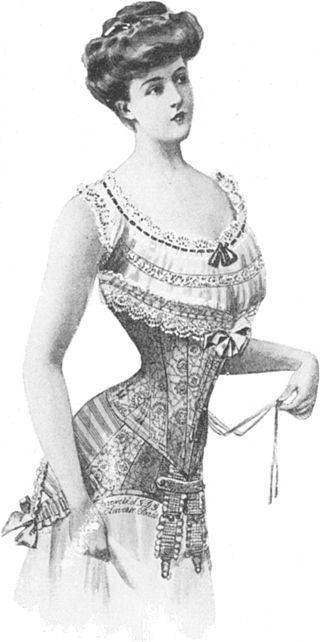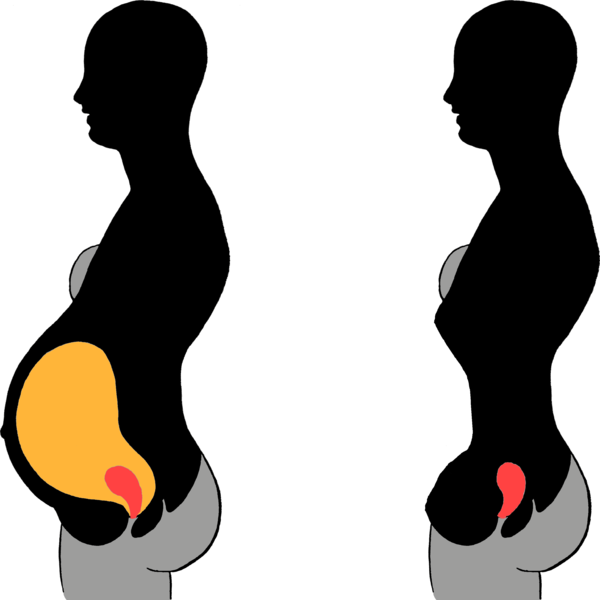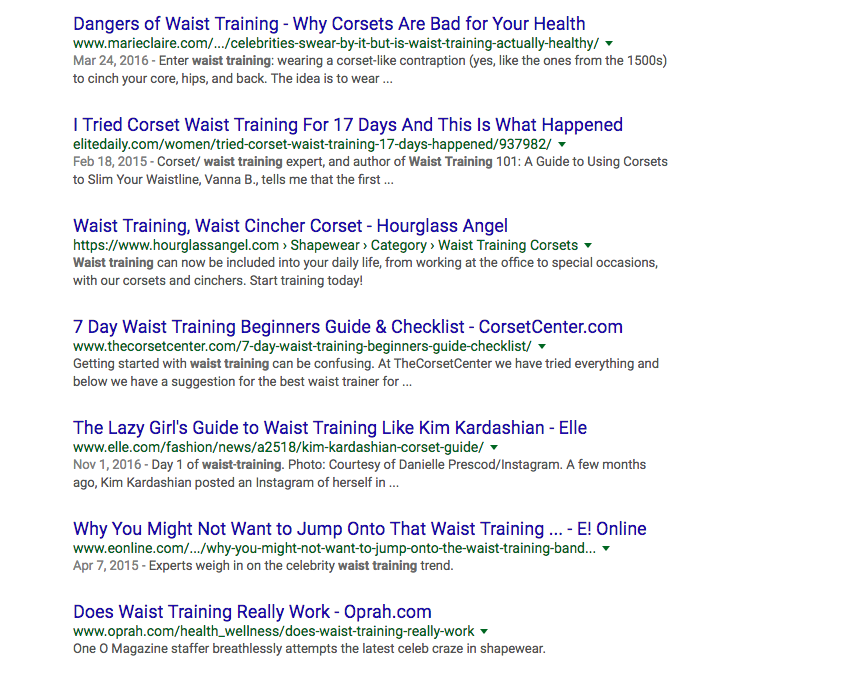An Old Beauty Trend Is Back — and It Comes With Health Risks

By:
Corsets are making a comeback — complete with health consequences. You may have seen this new ad invade your Facebook page:
It's sponsored by Waistshaperz, and features Kylie Jenner in a "waist trainer," the updated word for "corset."
Corsets: A popular fashion statement in the 19th century are popping up everywhere.
Corsets, originating in early 16th century Europe, became known for helping to exaggerate a woman's figure into an hourglass shape.
As the University of Virginia's Historical Collection's page explains, the trend really picked up pace about 300 years after that. "Throughout the 1800s, corset forms became more and more exaggerated, women’s clothing increasingly hugged the torso, and the corset squeezed in more and more of the body to create an 'ideal' female shape from shoulder to thigh."
 Public Domain/Wikimedia - wikimedia.org
Public Domain/Wikimedia - wikimedia.org
They continue: "These efforts to achieve ever-smaller waists eventually led to outcries against corsets, first in the 1820s and 1830s and again in the 1880s and 1890s. Physicians objected to the health risks, religious leaders objected to the display of the exaggerated female shape, and feminists decried the corset as real and symbolic imprisonment of women."
Though corsets fell out of fashion in America in the 1920s, when the curve-less flapper look became the ideal, it didn't mean waist training was gone forever. Corsets disappeared in America around WWII, as the War Industries Board asked women to stop wearing them because they contained metal, which was deemed necessary for war efforts.
Girdles, similar to corsets, were sought out in the 1950s until the early-mid 1960s in America, and became unfashionable after that in part to the hippie movement.
In the '90s, corsets reemerged among the underground fetish community and then became popular with celebrities like Madonna as outerwear.
But In 2013, The New York Times declared it was "the return of the tight squeeze." Meaning, corsets made a comeback.
Waist training really picked up steam again in 2016.
Waist training (where someone wears a corset and gradually makes it tighter on in order to "train" their waist into a slimmer shape) seemed to hit its peak in 2016, in part due to the Kardashians and their endorsements.
But even though they've seen a resurgence, that's not to say that modern corsets are without risk.
Spinal surgeon Dr. Paul Jeffords told USA Today, "just because a celebrity promotes it doesn't mean that it's safe or that it works or that it's proven." He further explains that these waist trainers likely won't make anyone go down several clothing sizes, but they could instead affect your health:
"My focuses as a spinal surgeon are the musculature effects and what effect does it have on the spine, the bones, the ligaments, the nerves. And certainly there can be some significant side effects with the prolonged use of these type of devices."
Dr. Tasneem Bhatia was a little more succinct with USA Today: "It just crams all of your organs together. So over a long period of time, wearing it too much and too frequently, it can cause damage too."
But Valerie Steele, director and chief curator of The Museum at the Fashion Institute of Technology tells Collector's Weekly (CW) she thinks there's a misunderstanding of the corset's true consequences. "Most people today think corsets were extremely dangerous and caused all kinds of health problems, from cancer to scoliosis," she told CW writer Lisa Hix. "And that’s quite inaccurate. Most of the diseases that have been credited to corsets, in fact, had other causes. Corsets did not cause scoliosis, the crushing of the liver, cancer, or tuberculosis."
Steele does, however, acknowledge "it doesn’t mean that corsets were without any health problems" which Hix elaborates on: "They did force organs to shift around, cause indigestion and constipation, and eventually weakened back muscles. And they didn’t leave a lot room for pregnant women’s fetus-incubating bellies."
 Haabet/Public Domain/Wikimedia - wikimedia.org
Haabet/Public Domain/Wikimedia - wikimedia.org
The rise of waist trainers even inspired a viral video of a woman ranting about how dangerous corsets can be.
Yet despite the health risks, a quick Google search reveals that waist training is still trending as both a topic of discussion and a how-to guide:
 Google - google.com
Google - google.com
A search for #waisttraining on Instagram produces over 900,000 results; for #corset, over one million. That women are accepting a garment that forces their bodies into an hour glass shape shows the lasting power that beauty standards have.
